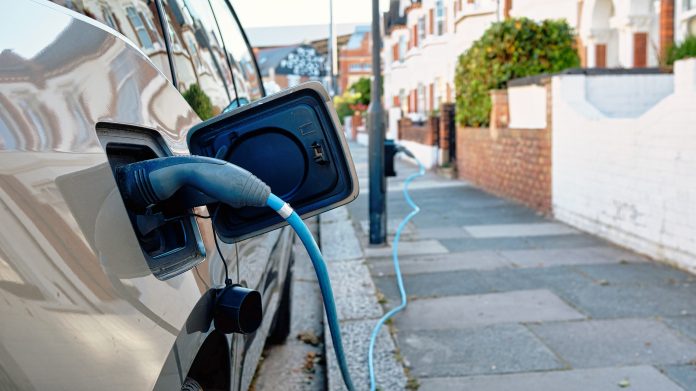A recent analysis has unveiled significant disparities in public electric vehicle (EV) charging infrastructure across Great Britain, exposing what are termed “charging deserts”
These areas, particularly prevalent outside major cities, face a critical shortage of accessible charging points, leaving many households without convenient options for EV charging, reported the Guardian.
Great Britains access to street parking
According to data from Field Dynamics consultancy, approximately three-quarters of households that rely on street parking do not have a public EV charger within a five-minute walk.
This situation affects an estimated 9.3 million households in the UK, showing the challenges faced by urban and suburban areas where off-street parking is limited.
The study highlights specific regions facing acute shortages. North-east Derbyshire and Redditch in the West Midlands are among the worst affected, with only a small fraction of on-street households having access to public chargers, 1.3% and 3.2%, respectively.
Electric vehicle charging in different areas
This stands in contrast to affluent areas like Westminster and Kensington and Chelsea in London, where charger coverage extends to nearly all households.
The disparity in charging infrastructure is not solely an issue of urban versus rural areas but also reflects historical development patterns. Many towns and villages were laid out before widespread car ownership, resulting in limited off-street parking availability that complicates EV charger installation.
While the overall number of public chargers in the UK has grown by 46% in the year leading up to July 2023, significant gaps persist. The average coverage outside London trails behind, with some local authorities reporting less than 10% of on-street households having access to chargers.
Efforts to address these gaps vary across regions. Local authorities such as Brighton, Coventry, and Portsmouth have made substantial progress, achieving charger coverage rates as high as 83%, 76%, and 58% respectively. These areas have implemented proactive strategies to expand infrastructure, leveraging government funding and community partnerships.
Rapid electric vehicle chargers
In contrast, regions like North-east Derbyshire and Redditch are now focusing on bolstering their charger networks. Initiatives include installing more rapid chargers and applying for government funding to support further expansion efforts.
Experts emphasise the importance of equitable infrastructure development to support the growing adoption of EVs. They argue that while affluent areas and regions historically supportive of EVs have thrived, greater government support is needed to ensure consistent and widespread charger accessibility across all communities.











